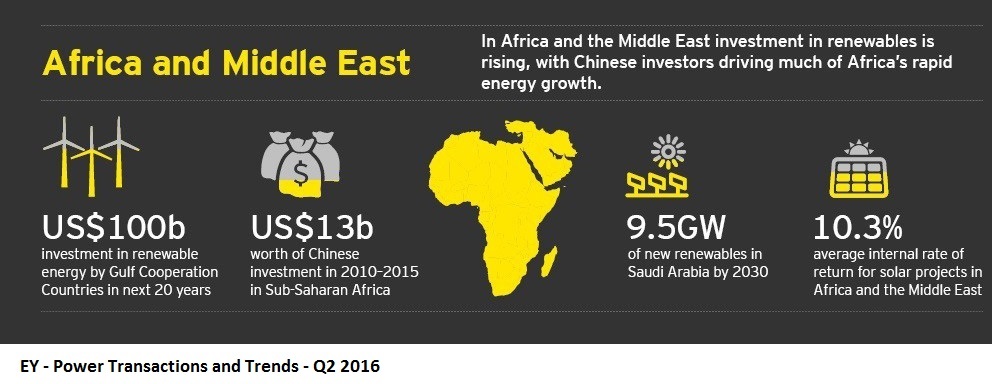Low carbon economies in MENA region could become reality by 2030

The Middle East and North Africa (MENA) region’s energy systems could rely primarily on renewables by 2030. A new study reveals that the cost of wind and solar power in the region could fall as low as $39 to $58/MWh, if different energy resources were connected to a “super grid” allowing for the transmission of high volumes of electricity across longer distances. Researchers at the Lappeenranta University of Technology found, for example, that if Iran's energy system ran with 100% renewables, it would be 50-60% cheaper than nuclear or fossil fuel carbon capture storage (CCS) options. Based on financial and technical assumptions for the year 2030, the fossil fuel CCS option, may cost around €127/MWh; in contrast, the price of fully renewable energy electricity is estimated at $42-63/MWh,
A low carbon future presents big opportunities for businesses and policy-makers in the MENA region. Globally, the low-carbon economy is already worth $5.5 trillion a year and $90 trillion will be invested in the world's infrastructure, agriculture and energy systems by 2030. A recently reported study for the Arab Forum for Environment and Development (AFED) has estimated that the cost of environmental degradation in the Arab region is approximately 5 % of GDP and leading economic analyses of the impacts of climate change demonstrate that the costs of inaction far outweigh the costs associated with a transition towards a lower carbon economy. Businesses will increasingly be required to disclose climate change impacts and risk exposure and sustainability, and climate change credentials are coming under greater scrutiny from governments, consumers, employees and investors.
Governments in the region are committed to energy reforms, whle mergers and acquisitions in the renewables sector are picking after a long slump. Greenfield activities continue to dominate power and utility transactions, attracting $ 8.7bn of investment last year. EY’s report on ‘Power transactions and trends’ noted key investment announcements in the last quarter of 2016, including the Kuwait Fund for ArabEconomic Development debt financing of $115.5m to set up a desalination plant in Egypt. The UAE saw new projects to support its raised renewable energy target from 24% to 26%. Dubai launched a $US 27 billion green fund to support global sustainability projects. In Oman subsidies were removed and cost-reflective tariffs introduced for customers using more than 150 MWh of electricity per annum. Saudi Arabia plans to cut electricity and water subsidies by $53bn by 2020 and tenders are in the offing to boost solar capacity by over 2000 MW before 2020. Egypt, is planning to build solar plants with a total capacity of 250 MW. Jordan, announced further renewable energy tenders and is developing a National Green Growth Plan. The Tunisian government recently announced plans to invest $1 billion towards the installation of 1,000 megawatts (MW) of renewable energy in 2017 and has committed to generating 30% of its electricity from renewable energy sources in 2030.
Read the full paper: The MENA Super Grid towards 100% Renewable Energy Power Supply by 2030



